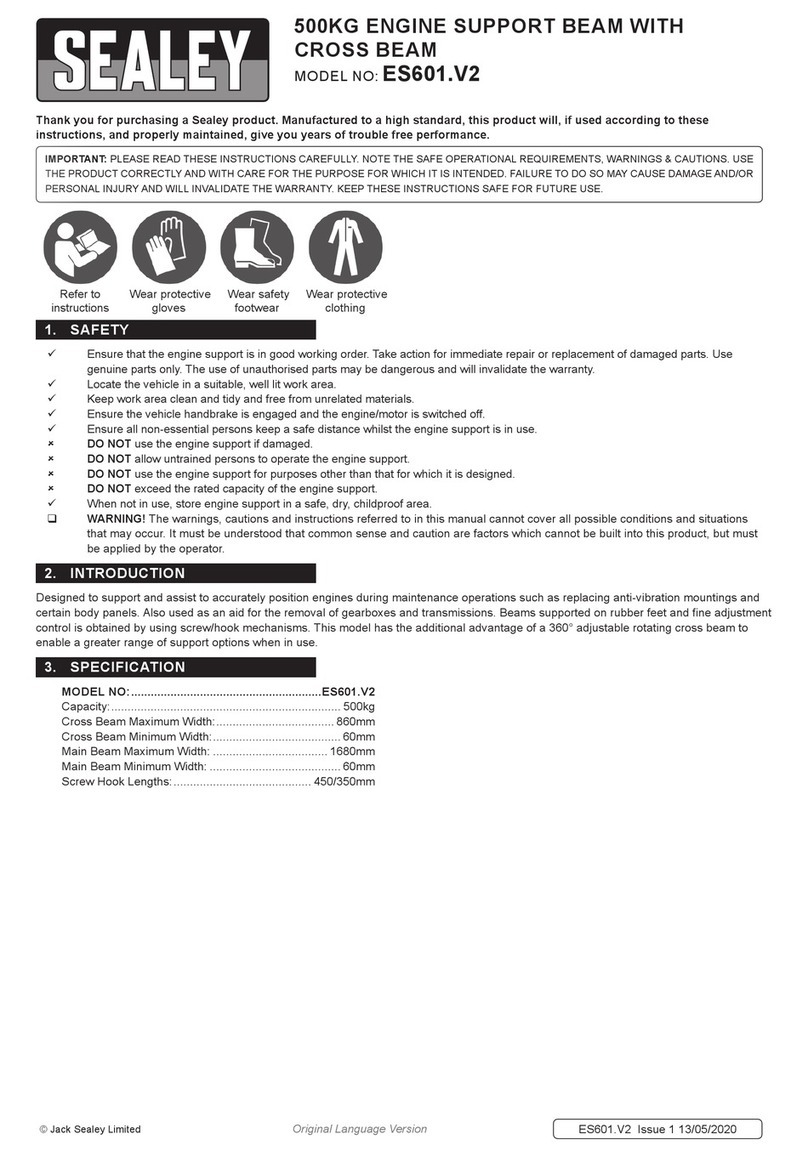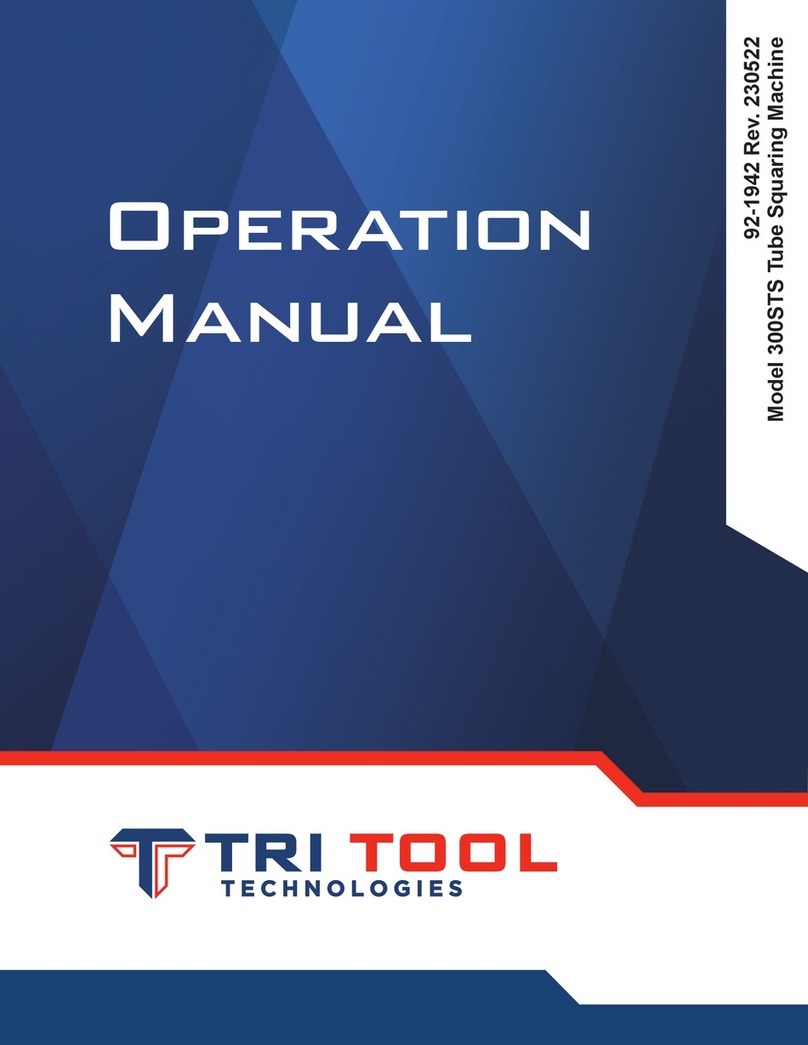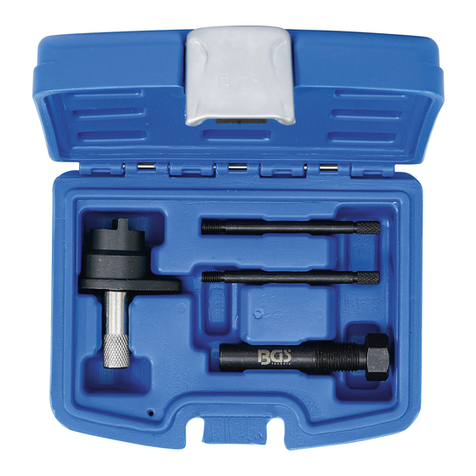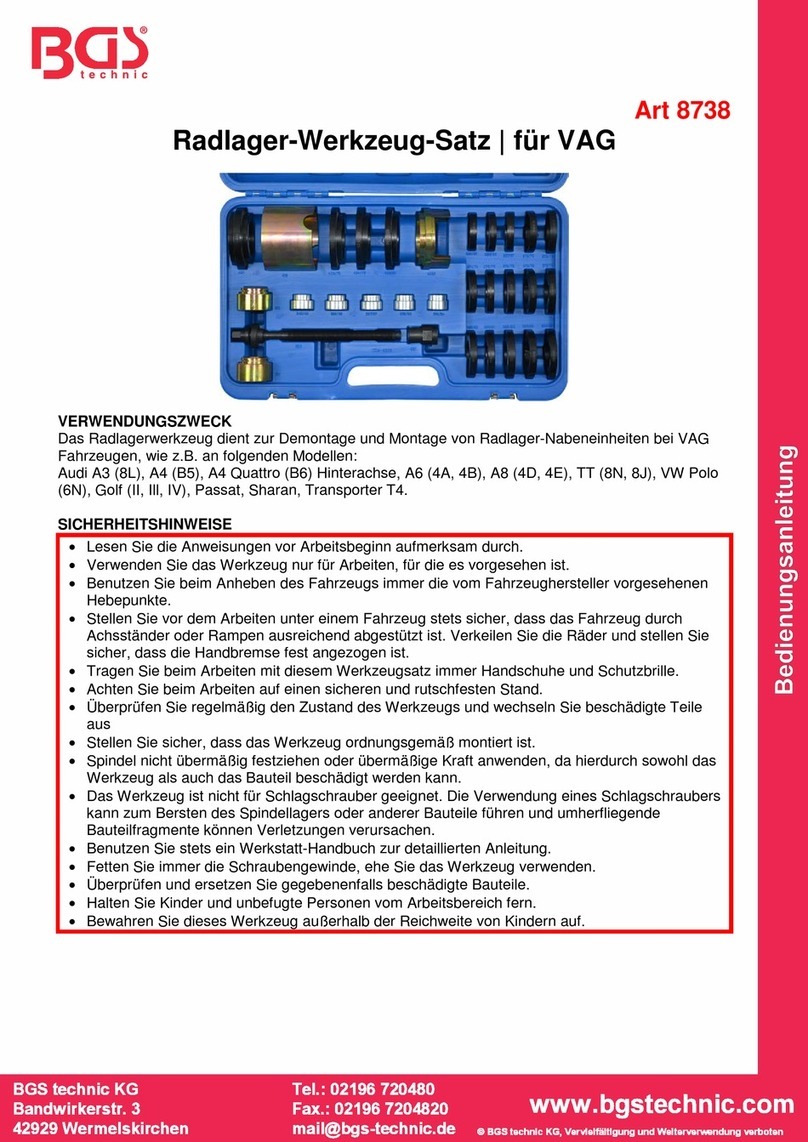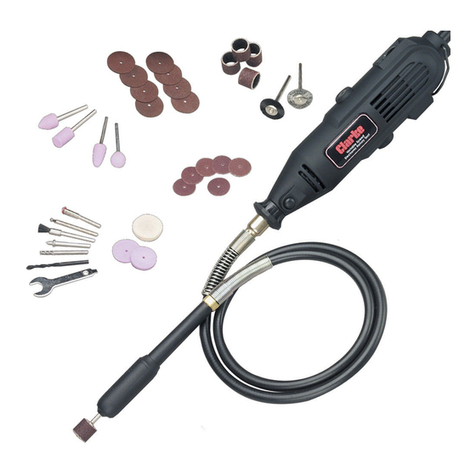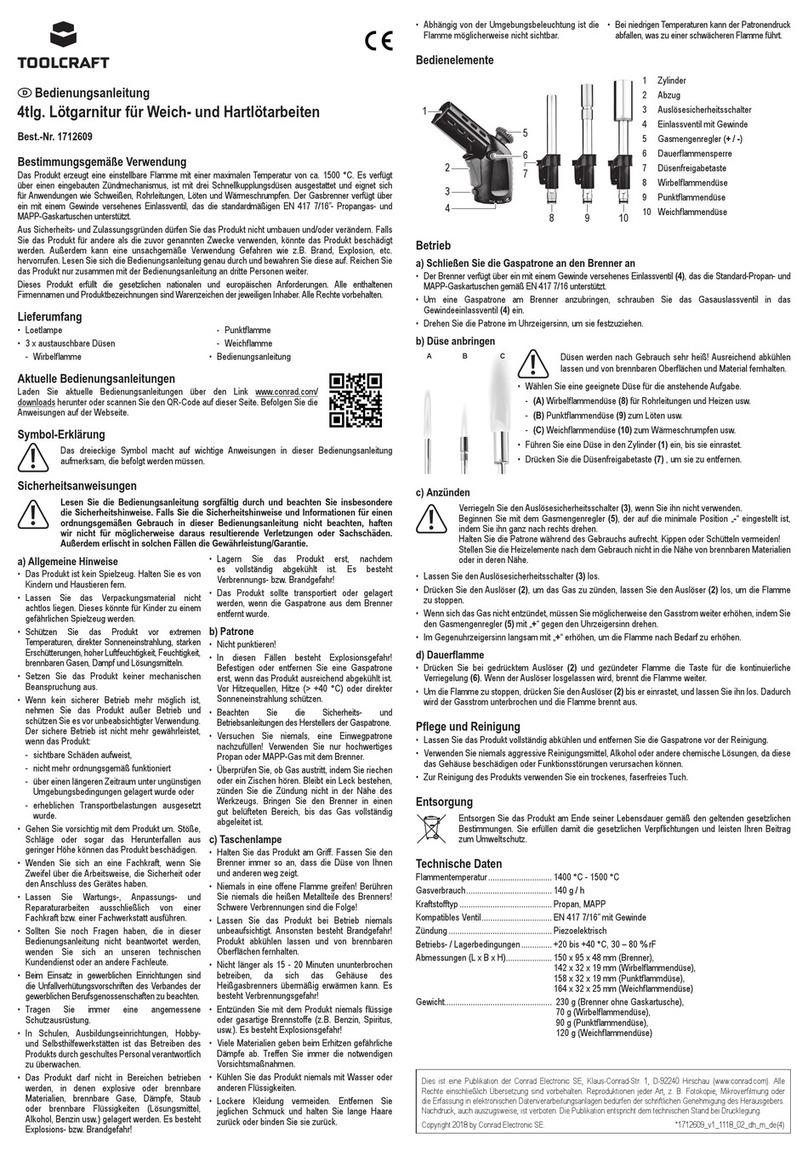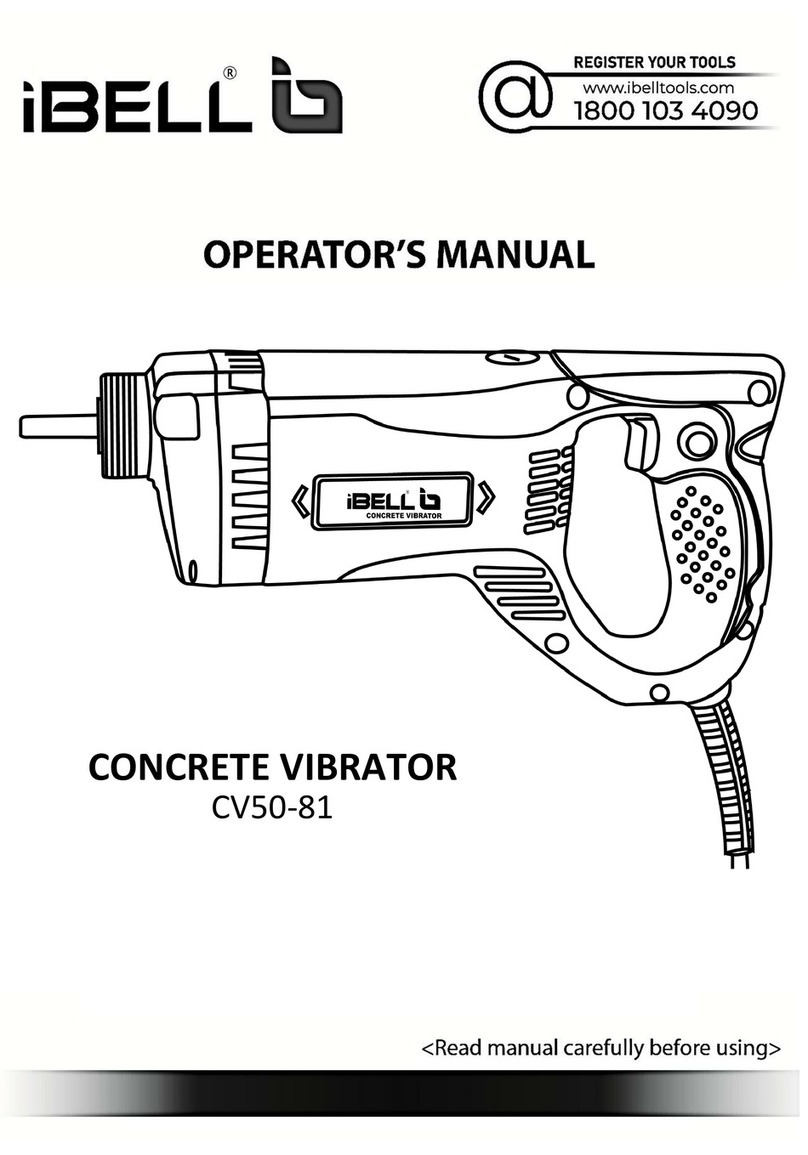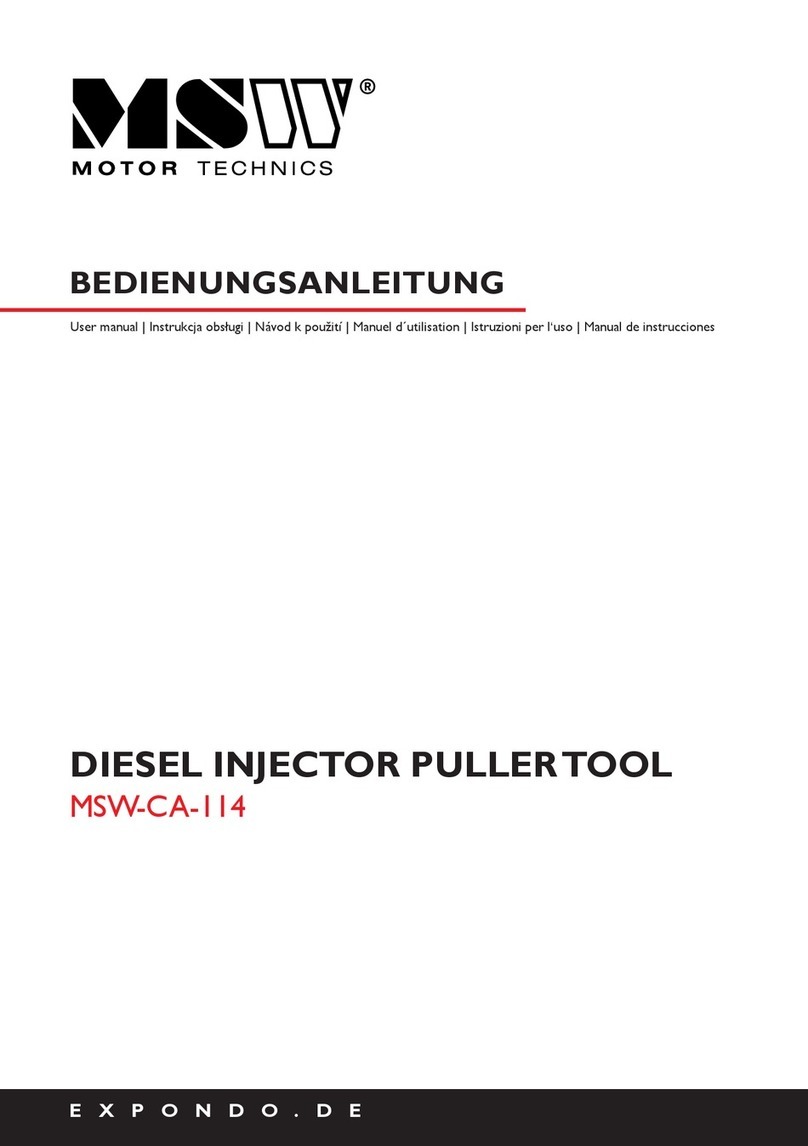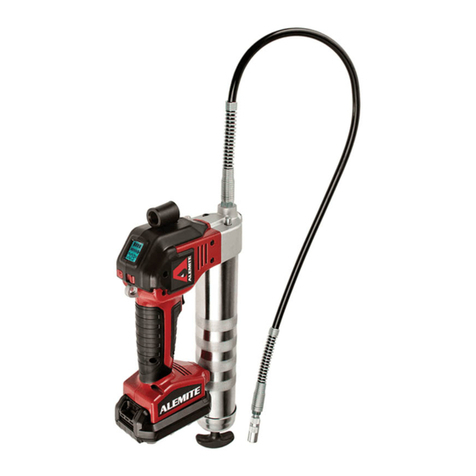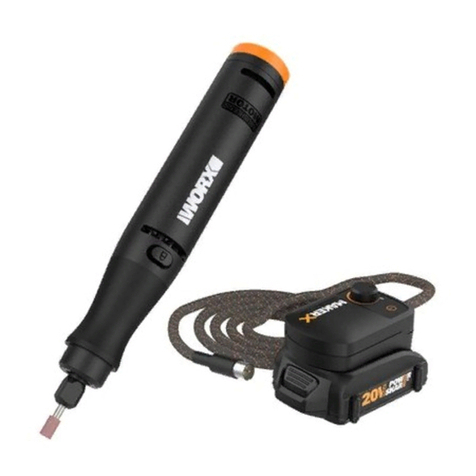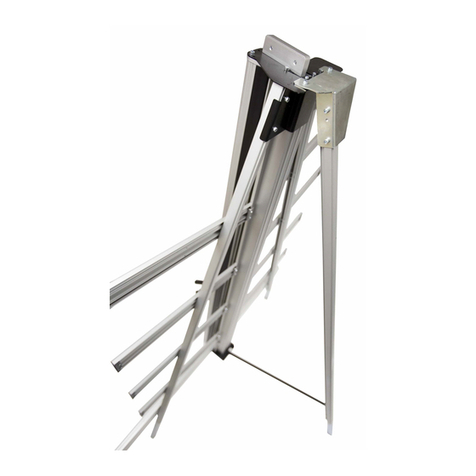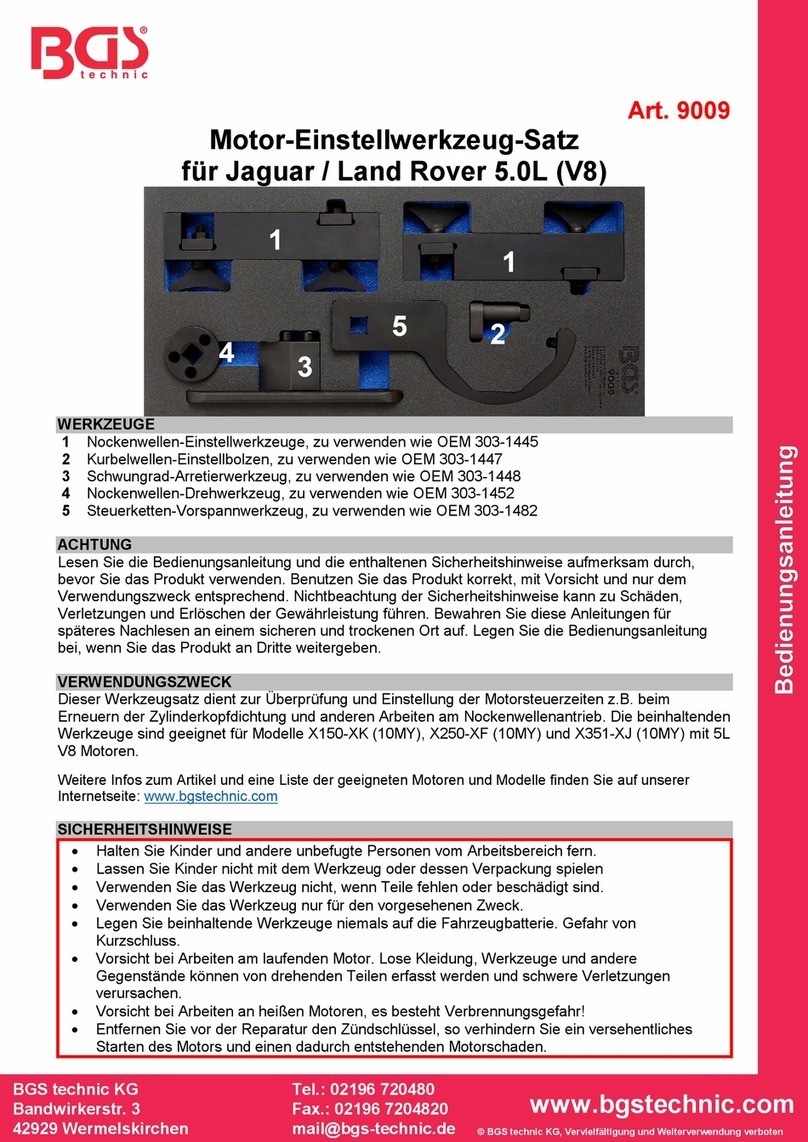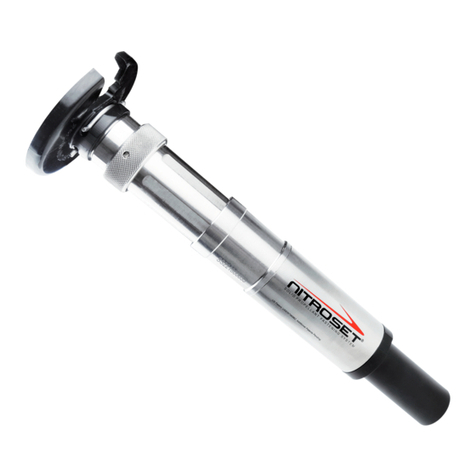TOOLSPACE HJK-1 User manual

Model: HJK-1
Cordless Engraving Tool

Dear Customer,
Thank you for your purchase.
Your purchase means the world to us.
If you have any questions, we are here to service you.
lf the product you received is damaged or has quality
problems, please contact us through Email below and
attach product pictures of related problems,we will
reply to you as soon as possible,and provide you with
the best solution.
Best regards,
Toolspace Customer Service Team


1
Contents
Intr .................................. 2
Intended use......................................... 2
Notes on trademarks................................. 2
Features...........................................3
Package contents....................................3
Technical s ............................. 3
General power tool safety warnings ............ . 4
1. Work area safety..................................4
2. Electrical safety...................................5
3. Personal safety....................................5
4. Power tool use and care ........................... 6
5. tool use and care ......................... 7
6. Service......................................... .. 9
Safety guidelines fry chargers................... .. 9
9
9
Before use ................................. .
Charging try.......................
ry level display ................................10
Oper ................................. . 11
Switc................................11
the penetrpth of the engraving ........ . 11
Changing the engr ......................... 11
Working procedures................................. 12
Maintenance and cleaning .................... . 13
Disposal ............ . . . . . . . . . . . . . . . . . . . . . . . . 13
Disposal of the appliance............................. 13
Service .................................... . 14

2
CORDLESS ENGRAVING TOOL
Introduction
Congratulations on the purchase of your new appliance.
You have chosen a high-quality product . The operating
instructions are part of this product . They contain important
information about safety, usage and disposal . Before using the
product, please familiarise yourself with all of the operating and
safety instructions. Use the product only as described and for the
range of applications specified . Please also pass these operating
instructions on to any future owner .
Intended use
This appliance is intended for engraving or decorating materials
such as metal, plastic, glass, ceramics, leather and stone . Any other
usage or modification of the appliance is deemed to be improper
and carries a significant risk of accidents . The manufacturer accepts
no responsibility for damage(s) attributable to misuse . This appliance
is not intended for commercial use .

3
Features
ON/OFF switch
Battery capacity/charge level indicator
3x indicator LEDs (2 stroke rate levels per LED)
+
–
speed control buttons (stroke rate)
speed control buttons (stroke rate)
USB socket
USB plug of the charger cable
Charging cable
USB plug of the charging cable
Engraving tip lock
Engraving tip
Engraving templates
Package contents
1 cordless engraving tool
1 charging cable
1 engraving tip
5 engraving templates
1 set of operating instructions
1 collection bag
Technical specifications
Cordless engraving tool
Nominal battery voltage: 4 V (DC)
Battery (integrated): LITHIUM ion
Battery capacity: 2000 mAh
Stroke rate: n06000–19000 rpm

4
WARNING!
►Depending on the manner in which the power tool is being
used, and in particular the kind of workpiece that is being
worked, the vibration and noise emission values can deviate
from the values given in these instructions during actual use of
the power tool .
►Try to keep the load as low as possible . Measures to reduce
the vibration load are, e .g. wearing gloves and limiting
the working time . Wherein all states of operation must be
included (e .g. times when the power tool is switched off
and times where the power tool is switched on but running
without load) .
General power tool safety
warnings
WARNING !
►Read all safety warnings, instructions, illustrations and
specifications provided with this power tool. Failure to fol -
low all instructions listed below may result in electric shock,
fire and/or serious injury .
Save all warnings and instructions for future reference .
The term „power tool“ in the warnings refers to your mains-operated
(corded) power tool or battery-operated (cordless) power tool .
1 . Work area safety
a) Keep work area clean and well lit. Cluttered or dark areas
invite accidents .
b) Do not operate power tools in explosive atmospheres, such
as in the presence of flammable liquids, gases or dust. Power
tools create sparks which may ignite the dust or fumes .

5
c) Keep children and bystanders away while operating a power
tool. Distractions can cause you to lose control .
2 . Electrical safety
a) Power tool plugs must match the outlet. Never modify the
plug in any way. Do not use any adapter plugs with earthed
(grounded) power tools. Unmodified plugs and matching outlets
will reduce risk of electric shock .
b) Avoid body contact with earthed or grounded surfaces,
such as pipes, radiators, ranges and refrigerators. There is an
increased risk of electric shock if your body is earthed or grounded.
c) Do not expose power tools to rain or wet conditions. Water
entering a power tool will increase the risk of electric shock .
d) Do not abuse the cord. Never use the cord for carrying, pull -
ing or unplugging the power tool. Keep cord away from heat,
oil, sharp edges or moving parts. Damaged or entangled cords
increase the risk of electric shock .
e) When operating a power tool outdoors, use an extension cord
suitable for outdoor use. Use of a cord suitable for outdoor use
reduces the risk of electric shock .
f) If operating a power tool in a damp location is unavoidable,
use a residual current device (RCD) protected supply. Use of
an RCD reduces the risk of electric shock .
3 . Personal safety
a) Stay alert, watch what you are doing and use common sense
when operating a power tool. Do not use a power tool while
you are tired or under the influence of drugs, alcohol or medi -
cation. A moment of inattention while operating power tools may
result in serious personal injury .
b) Use personal protective equipment. Always wear eye
protection.
Protective equipment such as a dust mask, non-skid

6
safety shoes, hard hat or hearing protection used for appropriate
conditions will reduce personal injuries .
c) Prevent unintentional starting. Ensure the switch is in the
off-position before connecting to power source and/or battery
pack, picking up or carrying the tool. Carrying power tools
with your finger on the switch or energising power tools that have
the switch on invites accidents .
d) Remove any adjusting key or wrench before turning the power
tool on. A wrench or a key left attached to a rotating part of the
power tool may result in personal injury .
e) Do not overreach. Keep proper footing and balance at all
times. This enables better control of the power tool in unexpected
situations.
f) Dress properly. Do not wear loose clothing or jewellery. Keep
your hair and clothing away from moving parts. Loose clothes,
jewellery or long hair can be caught in moving parts .
g) If devices are provided for the connection of dust extraction
and collection facilities, ensure these are connected and
properly used. Use of dust collection can reduce dust-related
hazards .
h) Do not let familiarity gained from frequent use of tools allow
you to become complacent and ignore tool safety principles.
A careless action can cause severe injury within a fraction of a
second.
4 . Power tool use and care
a) Do not force the power tool. Use the correct power tool for
your application. The correct power tool will do the job better
and safer at the rate for which it was designed .
b) Do not use the power tool if the switch does not turn it on and
off. Any power tool that cannot be controlled with the switch is
dangerous and must be repaired .

7
c) Disconnect the plug from the power source and/or remove the
battery pack, if detachable, from the power tool before mak -
ing any adjustments, changing accessories, or storing power
tools. Such preventive safety measures reduce the risk of starting
the power tool accidentally .
d) Store idle power tools out of the reach of children and do not
allow persons unfamiliar with the power tool or these
instructions to operate the power tool. Power tools are
dangerous in the hands of untrained users .
e) Maintain power tools and accessories. Check for misalign -
ment or binding of moving parts, breakage of parts and any
other condition that may affect the power tool’s operation.
If damaged, have the power tool repaired before use. Many
accidents are caused by poorly maintained power tools .
f) Keep cutting tools sharp and clean. Properly maintained cutting
tools with sharp cutting edges are less likely to bind and are
easier to control .
g) Use the power tool, accessories and tool bits etc. in accord -
ance with these instructions, taking into account the working
conditions and the work to be performed. Use of the power
tool for operations different from those intended could result in a
hazardous situation .
h) Keep handles and grasping surfaces dry, clean and free from
oil and grease. Slippery handles and grasping surfaces do not
allow for safe handling and control of the tool in unexpected
situations.
5 . Battery tool use and care
a) Recharge only with the charger specified by the manufacturer.
A charger that is suitable for one type of battery pack may create
a risk of fire when used with another battery pack .

8
b) Use power tools only with specifically designated battery
packs. Use of any other battery packs may create a risk of injury
and fire .
c) When battery pack is not in use, keep it away from other
metal objects, like paper clips, coins, keys, nails, screws or
other small metal objects, that can make a connection from
one terminal to another. Shorting the battery terminals together
may cause burns or a fire .
d) Under abusive conditions, liquid may be ejected from the bat -
tery; avoid contact. If contact accidentally occurs, flush with
water. If liquid contacts eyes, additionally seek medical help.
Liquid ejected from the battery may cause irritation or burns .
e) Do not use a battery pack or tool that is damaged or modi -
fied. Damaged or modified batteries may exhibit unpredictable
behaviour resulting in fire, explosion or risk of injury .
f) Do not expose a battery pack or tool to fire or excessive
temperature. Exposure to fire or temperature above 130 °C
(265°F) may cause explosion .
g) F
ollow all charging instructions and do not charge the battery
pack or tool outside the temperature range specified in the instruc -
tions. Charging improperly or at temperatures outside the specified
range may damage the battery and increase the risk of fire .
CAUTION! RISK OF EXPLOSION! Never charge
non-rechargeable batteries!
Protect the rechargeable battery from heat, for
example from continuous exposure to sunlight,
fire, water and moisture. There is a risk of explosion .

9
6 . Service
a) Have your power tool serviced by a qualified repair person
using only identical replacement parts. This will ensure that the
safety of the power tool is maintained.
b) Never service damaged battery packs. Service of battery packs
should only be performed by the manufacturer or authorized
service providers .
■If you are using a USB power supply, the
mains socket used must always be easily
accessible so that the USB power supply can
be quickly disconnected from the socket in a
hazardous situation . You should also observe
the operating instructions for the USB power
supply.
Before use
Chargingthe appliance battery Only for indoor use!
NOTE
►The battery is supplied partially charged . Charge the battery
before first use. Li-ion batteries can be charged at any time
without adversely affecting their service life . Interrupting the
charging process does not damage the battery .
.
►Never charge the battery pack if the ambient temperature is
below 10°C or above 40°C . If a lithium-ion battery is to be
stored for an extended period, the charge level should be
checked regularly . The optimum charge level is between 50%
and 80% . The storage climate should be cool and dry and
the ambient temperature should be between 0°C and 50°C .

10
Starting charging:
♦Connect the USB plug of the charging cable to the
USB socket on the appliance .
♦Connect the USB plug of the charger cable to the mains
adapter .
♦The battery charge level indicator blue light start flashing .
Stopping charging:
♦The blue light stops flashing and keep bright, indicates that
charging is complete and the appliance is ready for use.
♦Disconnect the mains adapter from the power supply .
Battery level display
The battery level display indicates the charge level using LEDs .

11
Operation
Never use the appliance for purposes other than those for which it was
designed and only with original parts/accessories. Using attachments
or accessory tools other than those recommended in the operating
instructions can lead to a risk of injury.
Switching on and off
Switching on:
♦Press and hold the ON/OFF switch .
Switching off:
♦Let go of the ON/OFF switch .
Settingthe penetrationdepth of the engraving
Use the + / – speed control buttons and
to set the penetration depth of the engraving .
A low setting is usually suffcient for the most common applications.
♦Press the+ speed control button to increase the penetration
depth .
♦Press the– speed control button to decrease the penetration
depth .
Changing the engraving tip
CAUTION! RISK OF INJURY!
►Always switch the appliance off before carrying out any work on it.
♦Change the engraving tip as soon as it becomes worn
and no longer delivers the desired engraving results . Turn the
engraving tip lock anticlockwise (in working direction) until
the engraving tip can be removed .

12
♦Remove the spring and washer .
♦Slide the washer and spring onto a new engraving tip . Then
insert them and turn the engraving tip lock clockwise (in
working direction) to lock the tip in place .
♦Ensure that the engraving tip is fixed correctly in place.
Working procedures
You can use the appliance to create imaginative and unique engrav -
ings. For example, you can permanently mark valuable items . You
can engrave numbers and letters onto metal, glass, wood, plastic,
ceramics, stone and leather . To do this, use the supplied engraving
templates .
♦Hold the appliance at an angle, in the same way you would
hold a pen .
♦Your arm should be resting on the table .
♦Move the engraving tip over the workpiece while applying
gentle pressure. To ascertain the ideal engraving speed, prac -
tice on a spare piece of material .
NOTE
►The supplied engraving tip is made of tungsten steel . It is
therefore not suitable for engraving electronic media such as
CDs, DVDs, etc. These materials and their readability could be
damaged .

13
Maintenance and cleaning
WARNING ! RISK OF INJURY! Switch off the
appliance before carrying out any cleaning
or maintenance work
.
■The appliance is maintenance-free .
■Remove all dirt from the appliance . Use a dry cloth to do this.
■Do not allow any liquids to get into the appliance.
Disposal
Disposal of the appliance
The packaging is made from environmentally friendly material
and can be disposed of at your local recycling plant.
Do not dispose of power tools in your normal
household waste!
NOTE !
►The battery must be removed/disposed of by a specialist
technician .
Dispose of the appliance via an approved disposal company or your
municipal waste facility . Please comply with all applicable regulations.
Please contact your waste disposal facility if you are in any doubt .
Do not dispose of batteries in your normal
household waste!

14
Disposal of (rec
hargeable) batteries
Used batteries may not be disposed of in the household waste.
Consumers are legally obliged to dispose of batteries at a collection
point in their community/city district or at a retail store. The purpose
of this obligation is to ensure that batteries are disposed of in an
environmentally friendly manner . Only return batteries when they are
fully discharged .
Dispose of the packaging in an environmentally-friendly
manner.
Your local community or municipal authorities can
provide information on how to dispose of the worn-out
product .
Service
WARNING!
■Have the power tool repaired by the Service Centre
or a qualified electrician and only using genuine
replacement parts. This will ensure that the safety of the
appliance is maintained .
WARNING!
■Always ensure that the power plug or the mains cable
is replaced only by the manufacturer of the appliance
or by an approved customer service provider. This will
ensure that the safety of the appliance is maintained .
NOTE
Table of contents
